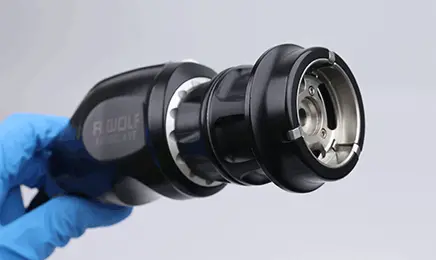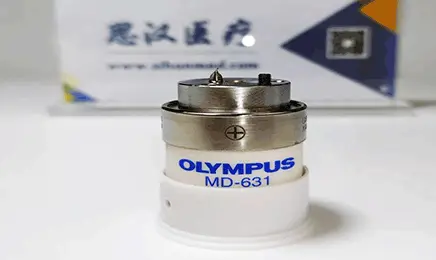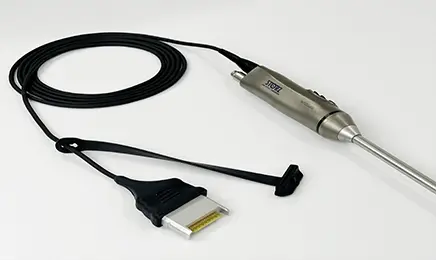Tel: +86-19906868508
E-mail: info@sihanmed.com
Tel: +86-19906868508
E-mail: info@sihanmed.com
Entering the body through small incisions, the structure is non-bendable. Generally, 3-4 different function incisions are required in minimally invasive abdominal surgery, including an imaging observation port, a main operation port for surgical instruments, and auxiliary operation ports. Currently, single-port surgical methods have gradually developed abroad and can be used in more departments. Rigid scope parts mainly include laparoscopes, hysteroscopes, and arthroscopes, and are more widely used in general surgery, thoracic surgery, urology, gynecology, and orthopedics compared to flexible endoscopes.
Rigid scope parts are mainly composed of optical and electronic components. The optical components include a lens group, with the front end containing the objective lens and light guide window for collecting optical images; the insertion part contains cylindrical lenses, light guide fibers, and the endoscope tube for transmitting images. These images are magnified by the eyepiece after being transmitted to the eyepiece section and then processed and imaged by the electronic components, namely the image sensor and image processor. Additionally, endoscopes are used in conjunction with peripheral devices such as cold light sources and insufflators to improve diagnostic and therapeutic outcomes.
General surgery is the department where rigid scope parts are most widely utilized. Rigid scope parts are extensively used in clinical practice, with minimally invasive techniques centered around endoscopic systems. Among them, general surgery sees the most widespread application of rigid scope parts. The advantages of minimally invasive surgery are significant, with rigid scope parts being a critical support point. The goal of surgical medicine is to minimize surgical trauma and, as far as possible, alleviate patient suffering, which aligns with the development trend of "surgical miniaturization." Compared to traditional surgery, minimally invasive surgery integrates medical imaging systems with high-tech medical devices, offering more humane operation, less patient trauma, faster postoperative recovery, and lower surgical risks. This is especially evident in complex surgical fields such as thoracic and cardiovascular surgery. However, the contradiction between small surgical incisions and inadequate surgical field exposure in minimally invasive surgery exists. Rigid scope parts introduce a new concept of small entry points combined with sufficiently restricted exposure, solving the problem of surgical access without compromising the quality of surgery. As a result, rigid scope parts have become essential tools in minimally invasive surgery.


